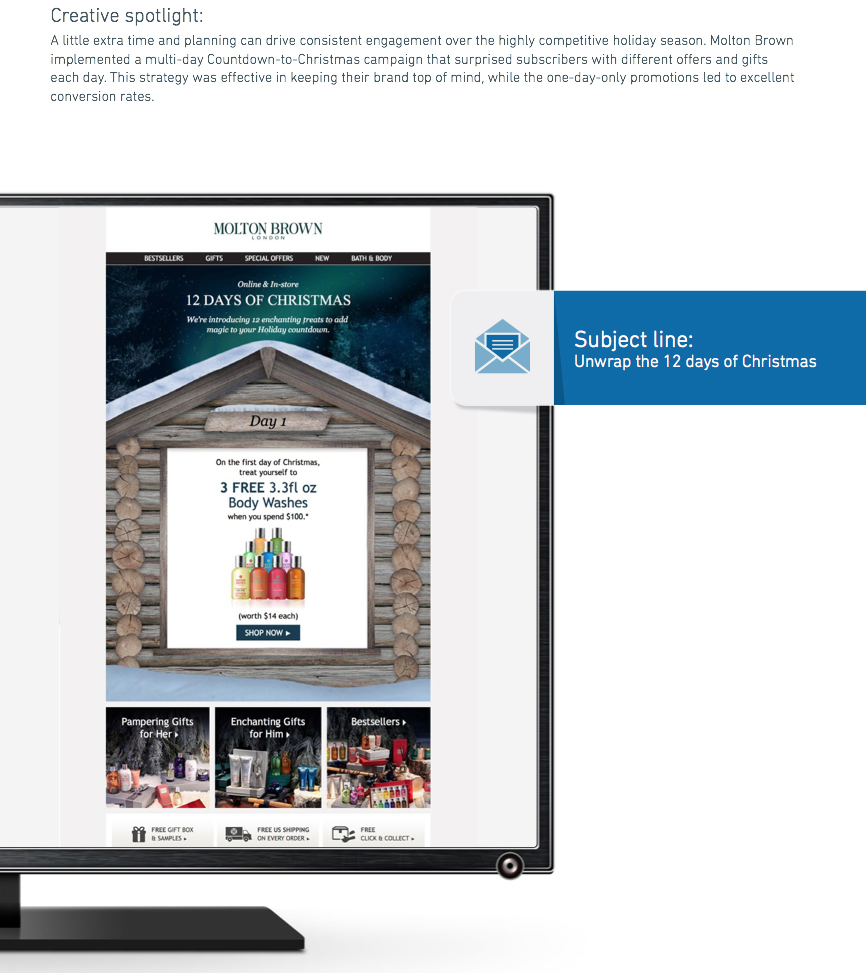Research shows 62% of UK smartphone users ‘can’t live without a smartphone’ – which makes this device a powerful channel for marketers aiming to engage with consumers in the run-up to the biggest holiday event of the year. So how mobile is your marketing strategy? Have you optimised your business showcase for mobile? Is the shopping experience you offer via mobile swift and simple? Don’t leave it any longer – here’s a checklist of holiday marketing ideas to action NOW:
When observing retail trends, there is one that stands out above all others – the prevalence of mobile devices. In May 2017, a reported 54% of UK smartphone owners used their smartphones to browse or buy products online.
Mobile has become a mainstay in retail marketing and features strongly in many seasonal cross-channel marketing campaigns over Christmas and Easter, through Valentine’s Day and Cyber Monday. For retailers to be successful during the holiday seasons, there are a number of ways they can adapt their marketing strategies to take full advantage of mobile. It’s not too late to implement some tactics for Christmas, or even Black Friday, that can really boost ROI and engagement.
Here’s a few ideas – check they are in place in your holiday marketing plans:
1. SMS and push messaging
SMS/push messages are particularly effective when used alongside more sophisticated email marketing communications. With one-day-only shopping events such as Black Friday and Cyber Monday, SMS/Push can convey the immediacy to drive interest – complementing and enhancing your emails with real-time reminders.
SMS marketing is a very powerful tool for marketers, with one of its obvious benefits being its immediacy – allowing you to instantly reach your customers. These messages are typically read straight away and thus are incredibly effective in conveying a sense of urgency when informing customers of sales and offers, letting them know when their available credit is low, or when items on their wish-list arrive in stock.
With 36% of UK smartphone users shopping/browsing in an app, push messaging can provide an added element of serendipity to your mobile campaign. Savvy marketers are finding innovative ways to use triggered geo-targeting to intercept consumers as they pass their stores. Location-based marketing takes advantage of a device’s GPS capabilities, so that relevant real-time push notifications can be used to create excitement and pull people into stores when they are nearby.
Despite its benefits, care needs to be taken – particularly with frequency and timing. If sent too often or at ill-chosen times, SMS/push messaging can become intrusive or bothersome and lead to an increase in unsubscribes.
2. Social media and email

Chicago-based Yes Lifestyle Marketing has created a holiday marketing guide, giving examples of email best practice, such as this one.
Social channels can be a crucial element in the path to conversion, and marketers should ensure that their mobile strategy strengthens their social efforts. Facebook, for instance, can be used to slowly build anticipation in advance of a promotion or sale, and rich personalised content can be used to showcase your brand and highlight offers or recent holiday news.
Email is a fantastic marketing channel to help encourage subscribers to explore more elements of your seasonal campaigns and to reach customers who are not engaging. Your mobile-optimised emails can be used to communicate urgent information to subscribers (eg. expiring e-vouchers), customer service updates, or used alongside push notifications or in-app messages.
3. Mobile wallet gift cards
Consumers expect their shopping experiences to be easy. They want to move seamlessly from shopping in-store to online via any device. Marketers can aid in this by providing digital gift cards that can be redeemed however the recipient requires – whether they want to print it, store it on their phones, save it in their mobile wallet, or share it with another recipient as a gift.
Mobile gift cards are not just a source for transactions. They can open the brand up to rich customer engagement opportunities before, during and after the payment moment. There are huge opportunities for marketers to use smart messaging to convey value added features/services to strengthen customer relationships and stay top of mind. Examples include highlighting extraordinary customer service, seasonal offers, frequent buyer programs, free shipping and comparisons with your competition.
Another useful tactic is to send location-based coupons that push special offers to consumers located near specific stores. These alerts can drive traffic, improve engagement and conversion rates whilst boosting brand awareness.
Mobile gift cards allow retailers to reach their mobile audience in relevant and persuasive ways. The level of engagement they generate can also lead to an increase in app downloads and other KPIs.
4. Don’t neglect the benefits of personalisation
The prevalence of smartphones has made people more connected to their devices than ever before. This bond can be an intensely personal one.
Consumers like to feel a sense of belonging and appreciation, and they want to know that you ‘get’ them. Using personalisation in marketing is a powerful tool because it adds a human element to communications allowing marketers to treat customers uniquely.
Consumers know when they are being marketed to, so personalisation tactics need to be subtle and sincere. Rather than their stated preferences (ie. their name/sex), savvy retail marketers will use consumer behavioural cues to personalise their messaging. Behavioural triggers such as basket abandonment or items added to wish lists, are an effective way to engage customers with offers and discounts via push, SMS and mobile wallet notifications.
It’s important to be responsive to consumers’ behaviours and target them contextually. For instance, during the holidays, create dynamic mobile-optimised content that showcases consumer needs rather than what you’re selling. Tell them when the shoes they browsed are back in stock, let them know if an abandoned basket item has been reduced in price, and build customer loyalty by sending a ‘thank you’ text after purchase. Also personalised push notifications based on the location of the customer can be used to send special location-based offers, eg. ‘30% off your next purchase at your local store’.
5. Research and uncover your customers
Conduct mobile research to uncover audience insights: What are the type of search terms your audience is looking for? What time of day do they most use their phones? How do they feel about your brand’s marketing efforts? When is the best time to post offers and rewards?
Insights from mobile consumer data can help you optimise campaigns during key retail periods such as Boxing Day which saw a 45% rise in online retail visits last year. This data can also aid your ability to quickly reach consumers with contextual marketing, thus forging lasting relationships.
So, have you optimised mobile in your holiday marketing?
Because mobile is hugely personal and immediate, it is a powerful way for brands to engage. With 62% of UK smartphone users agreeing with the statement, ‘I couldn’t live without my smartphone’, marketers need to look at each touchpoint of their business and ensure it is optimised for a mobile and non-mobile audience.
The beauty of mobile technology is that marketers can choose a variety of ways to reach their customers – SMS, email, push notifications or mobile wallets. Each tool can be combined to create a compelling, useful and tailored festive campaign that builds customer loyalty and drives higher ROI and engagement during the holiday season.
Whether you choose to add a mobile strategy into your existing holiday campaigns or make mobile the centre of your campaigns, the key to effective mobile marketing is to personalise what you send and to carefully balance relevance with timing.
Have an opinion on this article? Please join in the discussion: the GMA is a community of data driven marketers and YOUR opinion counts.






Leave your thoughts